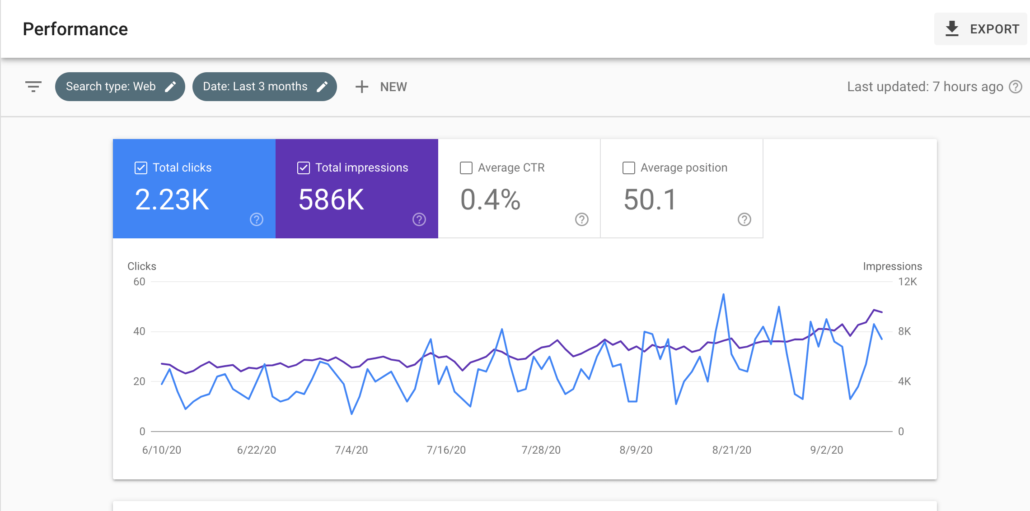How to Conduct SEO Competitive Analysis
Competitive analysis can be conducted in many different ways and it is something that all website owners and business owners should be doing. A thorough SEO competitive analysis can be the founding block for a very successful SEO strategy.
It can help you identify who your search competitors are, what they are strong at, and where they are weak. Along with keyword research, it can help you identify new topics to focus on.
This competitive analysis is going to focus solely on SEO content because technical SEO is something that you should optimize to the best of your ability, regardless of what your competition is doing. There is a slim chance that you may be able to deduce a technical SEO strategy from your competitors that you hadn’t thought of but I’ll save that for another day.
So what exactly is SEO competitive analysis and how do we begin?
Build a Competitor List – Search Competitors & Business Competitors
First, let’s start by building a list of competitors. This list should include search competitors and business competitors.
A search competitor is a website that appears in search results for a keyword that you’re trying to rank for but is not a direct business competitor. If you’re in the e-commerce space, this may be a retailer who sells your products as well as competitors’ products. they are not a direct competitor but they are a search competitor and for that reason, we want to outrank them in SERP.
You can find a list of search competitors by doing a quick Google search and seeing who appears in the top 10 or by using a tool such as SEMrush or ahrefs.
Keyword Gap Analysis
Once we’ve built a list of competitors, the next thing to do is run a keyword gap analysis using a tool like SEMRush. A keyword gap analysis allows you to see what keywords you and your competitors are both ranking for, which keywords your competitors are outperforming you for, and which keywords you are outperforming your competitors for.
This is helpful because it allows you to find keywords and topics that you can improve on in order to outrank your competitors. It also shows you which keywords they are focusing most heavily on.
All of this information is helpful and necessary to build a comprehensive SEO strategy. In order to beat your competition, you must know yours and their strengths and weaknesses.
Backlink Audit
The next step in SEO competitive analysis is a backlink audit. The purpose of the backlink audit is to find out which of your competitor’s pages are the most popular, the most linked to, and why. Once you have that information, you can develop a strategy to effectively replicate that success.
Using SEMrush, we can quickly see which pages have the most backlinks, sorted by domains or individual pages. With a little bit of work, we can filter out the low-quality backlinks and only focus on pages with high-quality backlinks. This is important because the larger the website, the more low quality backlinks they will have, by nature. we don’t want to take these low-quality backlinks into consideration so it’s important to filter them out.
We can also see the most powerful backlinks our competitor has and choose to see only one backlink per domain and to filter out the nofollow backlinks.
By analyzing the backlinks we may be able to figure out if they have an outreach strategy or if the backlinks are coming in naturally.
We can also quickly see which pages are driving the most organic traffic in which keywords are driving that traffic. After finding these top-performing pages, we manually analyze them to figure out why they are performing so well.
Types of Content & Content Gap Analysis
When analyzing the top-performing content, the first thing we want to look at is what type of content is it? Is it an infographic, a lengthy blog post, a video, or something else?
If you noticed that your competitor’s top-performing organic pages all have something in common, then that is most likely their SEO strategy. If their top-performing organic pages are all list pages or comparisons or reviews, etc., then that may be something that you want to incorporate into your own SEO content strategy.
If your competitors are generating more organic traffic based on the sheer number of pages that they have, then you may want to build a content strategy to beef up the number of pages that you have on your website.
This is essentially a content gap analysis, similar to a keyword gap analysis, but on a broader level. It’s important that you know where your content gaps are if you intend to improve them.
Paid Ads Keywords
Though this is not technically organic traffic, it’s important to see which keywords your competitors are spending money on. This can be done through SEMrush or SpyFu or other ads spying tools. This information is helpful because it shows you the keywords that they want to rank number one for. The keywords that they are willing to pay money for.
This may allow you to discover which of the products have the highest profit margin or which of their pages have the highest conversion rate. If all of their paid ads are leading to one product category or one landing page then there is probably a good reason for that and a lot that you can learn from that.
Conclusion
SEO competitive analysis is a very powerful tool when done correctly. It can be the basis of your own SEO content strategy or simply a small addition to your current SEO strategy. If you would like to know more, please reach out to Tuff’s SEO department.

Derek is a digital marketer based in Boston, Massachusetts with almost a decade of hands-on SEO experience. He finds it meaningful, challenging, and exciting to develop, test, and implement new SEO strategies. When he’s not auditing websites and optimizing content he’s usually backpacking and exploring new cultures.








